By Chryshane Mendis
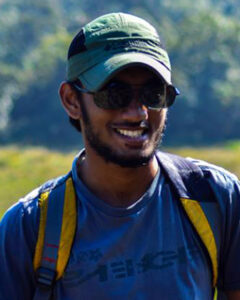 Inscriptions are an important source of information of the past in any civilization, and in that, Sri Lanka is fortunate to have a very large number of inscriptions from the earliest years of the Sinhalese civilization down to the Kandyan times. These various inscriptions, inscribed on stone and metal have aided the historian well, in complimenting and supplementing the already voluminous literature works. Sri LankaÔÇÖs inscriptions vary from scribbling of few words, to donations to clergy and to royal edicts and charters.
Inscriptions are an important source of information of the past in any civilization, and in that, Sri Lanka is fortunate to have a very large number of inscriptions from the earliest years of the Sinhalese civilization down to the Kandyan times. These various inscriptions, inscribed on stone and metal have aided the historian well, in complimenting and supplementing the already voluminous literature works. Sri LankaÔÇÖs inscriptions vary from scribbling of few words, to donations to clergy and to royal edicts and charters.
For some inscriptions to be considered important, the circumstances of the present make them important whereas their content as per say may not be so. For example, the Vallipuram gold plate inscription, its contents are just another record of a construction of the temple, but the fact that the locality of Nagadipa was in doubt (circumstances of the present) made this seemingly unimportant inscription very important. Had Nagadipa been fully accepted as the present Jaffna before its discovery, then it would not have had much significance. On the other hand, some inscriptions are important based on their content, on details such as a political event or an edict, also which in turn, help authenticate and confirm histories of the chronicles with epigraphic evidence. Inscriptions such as the Veleikkara inscription and the Polonnaru Katikavata are such examples for this. This series will examine in brief ten of the most important inscriptions found thus far.
Vallipuram Gold Plate inscription
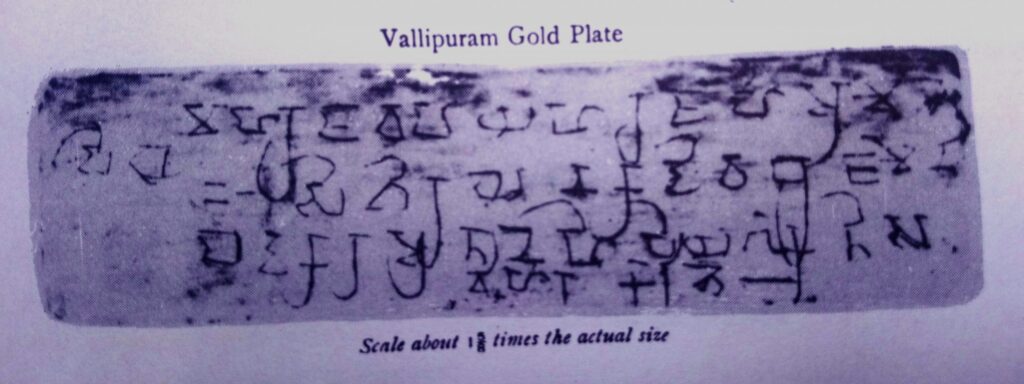
Location and discovery: – it was discovered in the village of Vallipuram of the Vadamaracci Division of Jaffna District in 1936, along with other minor antiquities from beneath the foundations of an ancient building.
Description: – Gold plate inscription with text in 4 lines.
Period: – 2nd century A.D, Early Anuradhapura period
Reign: – King Vasabha (126-170 A.D.)
Script: – 2nd century Brahmi
Language: – Old Sinhalese
Content: – ÔÇ£Hail! In the reign of the great King Vasa(ba) and when the Minister Isigiraya was governing Nakadiva, Piyaguka Tisa caused a vihara to be built at Badakara-atana.ÔÇØ
It speaks of a Vihara being built in the village of Badakara-atana which is thought to be the ancient name of Vallipuram, during the reign of King Vasabha of the Anuradhapura Kingdom and while a Minister named Isigiraya governed Nakadiva (Nagadipa). The name Piyaguka Tisa is that of a person named Tissa from Piyaguka (Piyangudipa); it is not clear if this vihara was named after such a person or if it was built by such a person.
Significance: – the importance of this inscription comes not from the fact that it was inscribed on a gold plate, but of the fact that it confirms the present location of Nagadipa as Jaffna. Nagadipa is mentioned several times in the ancient chronicles; as being the place of the BuddhaÔÇÖs second visit to the island, and home to the important ancient port of Jambukolapatuna from where the Venerable Sanghamitta Theri arrived with the Bo sapling. But until the early 20th century the exact location of Nagadipa was not known, until Dr. Paul E. Pieris was able to identify it as with the present Jaffna peninsula in his 1917 paper ÔÇÿNagadipa and Buddhist Remains in JaffnaÔÇÖ to the Royal Asiatic Society. He concluded this fact with references mainly to a work called the Nampota. Although this was accepted by many scholars at that time that Jaffna was the ancient Nagadipa, there remained a doubt; that is until the discovery of the Vallipuram gold plate inscription. Prof. Paranavitana says ÔÇ£the circumstances of the discovery of the plate leave us in no doubt that it was found where it was originally deposited in the second centuryÔǪit not only gives us the supreme ruler of the island at the time but also that of the local governor of Nagadipa. This last detail regarding the time of the foundation of the vihara has no significance if the shrine was not within the territorial division then known by the name of Nagadipa. And as the site of the religious foundation is within the Jaffna peninsula, it follows that Nagadipa and the Jaffna peninsula are identicalÔÇØ[1]. Thus the Vallipuram gold plate inscription helped verify the ancient locality of Nagadipa with that of Jaffna.
Note: – the area around Vallipuram village was known to contain the remains of ancient human habitation with indications of a Buddhist religious site in the area. Old records state that a stone Buddha image was found from this area and later presented to the King of Siam by Governor Sir Henry Blake in 1906. This inscription was brought to the attention of a young W. Rahula Thero and was examined by Prof. Senerat Paranavitana.
Gadaladeniya Dharmakeerthi Inscription
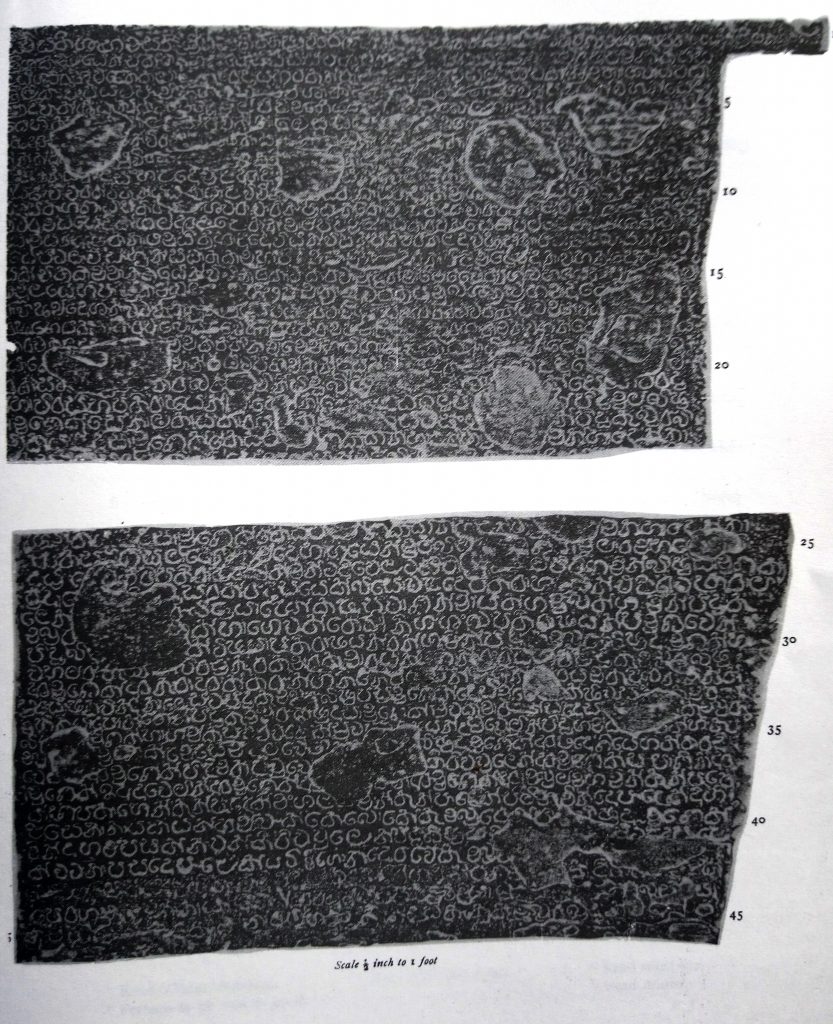
Location and discovery: – this inscription is found on the rock surface at the entrance to the Gadaladeniya temple in Gadaladeniya of the Kandy District. On the north-east entrance to the temple and right of the stone-cut steps can be found four inscriptions carved onto the rock in an area measuring 24 x 13 feet. Out of these, the ÔÇÿDharmakeerthi inscriptionÔÇÖ is the third from top and largest inscription of the four.
Description: – Rock inscription covering an area of approximately 14 x 13 feet in 45 lines.
Period: – 14th century A.D, Gampola period ÔÇô the record mentions as the full moon day of month Vesaga in Saka year 1266 or Wednesday, April 28th 1344 A.D.
Reign: – King Bhuvenekabahu IV (during his third regnal year)
Script: – Fourteenth century Sinhalese
Language: – Sinhalese
Content: – the inscription tells the building of the Gadaladeniya temple by the Great Dharmamakirtti Thero along with a description of the temple and a list of lands granted by various dignitaries.
It opens with a Sanskrit stanza with lines 2-3 informing the date of this record in the reign of King Bhuvenekabahu IV. Lines 3-5 mentions the lineage of Dharmmakirtti-sthavira as born in the family of Ganavasi who came to the island with the Sri Maha-bodhiya, and how he restored a two-storied image house at Sri Dhanyakataka (presend day Amaravati) in South India. Lines 5-12 describes how he obtained the co-operation of various dignitaries of state as well as ordinary men to build the present temple on a flat rock called Dikgala which was constructed by chief architect Ganesvaracari.  Lines 12-18 gives the architectural features of the shrine as being three-stories and the images and paintings found within it. Lines 18-45 describe the various lands of different villages which were donated for the maintenance of the temple by various officials. The majority of these persons are not known from any other source but some are mentioned in other inscriptions and literature such as Virasimha Patiraja, Virasundara and Nissamka Patiraja; but the most important of these mentioned here is Sena Lamkadhikara who also built the Lankatilaka Viharaya and wielded much power during the Gampola Kingdom. Regarding the geographical names mentioned in the inscription, the majority can be traced to the present, such as Gadaladeniya, Pamunuva, Rangama, Dalivela, Pilimatalawa and Gannoruwa.
Significance: – this inscription is important with respect to its content. Sthavira Dharmmakirtti was a prominent figure in the Buddhist religious sphere in mid-14th century Sri Lanka. The Nikaya Sangraha and Saddharmmalankara give many details on and his works for the development of Buddhism during this period. Thus this inscription confirms facts about him which are mentioned in the literature as well as confirming his overseas missions to South India (to Amaravati). Further it gives valuable details of the Gadaladeniya temple as it was when built; the mentioned paintings cannot be seen at present due to the renovations effected to this shrine since the time of King Parakramabahu VI of Kotte. Also it gives important details to the geography of the region along with names of previously known and unknown dignitaries. Thus this inscription in terms of content with regard to activities related the life and activities of Dharmmakirtti Thero, architecture and history of the Gadaladeniya temple, the Noblemen of that period and geography is an important source of knowledge.
Badulla Pillar Inscription(Horabora Inscription)
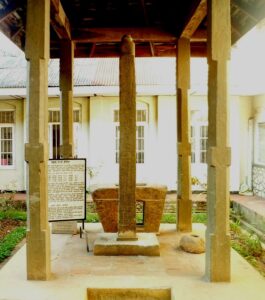
Location and discovery: – this inscription is at present found in the Senerat Paranavitana Public Library in Badulla town. This was initially discovered in 1857 about 3 miles northeast of the Mahiyangana stupa in the Horabora Wewa area by Deputy Government Agent of Bandulla Mr. Jone Belli and placed in the Badulla Kachcheri but later moved to the present location.
Description: – This is a Pillar inscription measuring 9 ft. 7 in. in height and about 10 in. in width and is inscribed on all four sides. ┬áThis is considered to be one of the tallest pillar inscriptions found in the country.
Period: – 10th century A.D, Late Anuradhapura period ÔÇô the record is dated to the second year of the reign of a King Sirisagabo Uda.
Reign: – King Udaya IV (946-954 A.D.)
Script: – Tenth century Sinhalese
Language: – Tenth century Sinhalese
Content: – the inscription is an edict of the administration and laws of a market place named Hopitigamu. It states that during the visit of the King to the Mahiyangana stupa, the trading community of Hopitigamu presented a petition to the King against the bailiffs of the lord of the village for breaking the rules enacted by a previous King and extracting illegal dues.
According to Paranavitana, it goes on that ÔÇ£the King ordered a Statute of the Council to be promulgated, prohibiting such illegalities. In pursuance of this royal command, the lords of the Chancellery (lekamge) sat in session and drafted the required legislation which, presumably, was assented to by the Council, and was promulgated as a katikavata (Act), after duly notifying the various administrative establishments that were concerned.ÔÇØ From here on, the regulations put forward, Paranavitana divides them into four parts.
Part one deals with the exaction of dues by the bailiffs of the village lord in consultation with the village elders and mercantile community. Example: ÔÇ£(Line A39-B1) when the bailiffs of any person who has obtained the market of Hopitigamu, have come to the village, they, together with the counselors (mandradi), the members of the mercantile corporation (vanigramayan) and the elders of the village (mahagrama), shall sit in session and receive fines in accordance with the Statute of the days of the Lord who expired in the seventeenth year, and in accordance with former usage; but they shall not do anything illegal.ÔÇØ
Part two deals with the rules that should be observed by royal officers in their dealings with the village. Example: ÔÇ£(Line B19-22) Royal officers who come to the village shall not accept liquor, meat, curd and oil; (L B25-26) [they] shall not carry on illicit trade.ÔÇØ
Part three deals with the conduct of business by the traders and duties of the royal officers in this respect. Example: ÔÇ£(Line B49-C3) Goods being brought to the market shall not be taken having gone to the road ahead; (L C10-13) Only if goods brought to the village are sold in the village [shall tolls dues be levied], if they are being transported through the village, no toll dues shall be levied; (L C17-18) Weighing shall not be done with madadi weights that have not being authorized.ÔÇØ
Part four mentions the rights, obligations and responsibilities of the householders and village institutions with regard to maintenance of law and order; and that in the event the royal officers contravening the provisions of this Statute, the lords of the Chancellery are to be informed. Example: ÔÇ£(Line C36-38) Loggings shall not be taken in the houses [of the members of the Committees] of Eight in this village; (L D20-23) In the case of disturbances in the houses of the householders, the disturbances shall be settled, the royal officers having been obtained [for that purpose].ÔÇØ
Significance: – as is evident from the few extracts of the inscriptions given above, this inscription is of immense importance, in the understanding of the internal trade of the country during the late Anuradhapura period, in the study of the tenurial rights of feudal lords, economic administration and the social situation of the period and also on the procedure of endorsement of legislative enactments in the Anuradhapura kingdom.
Panakaduwa Copper-Plate Charter of Vijayabahu I
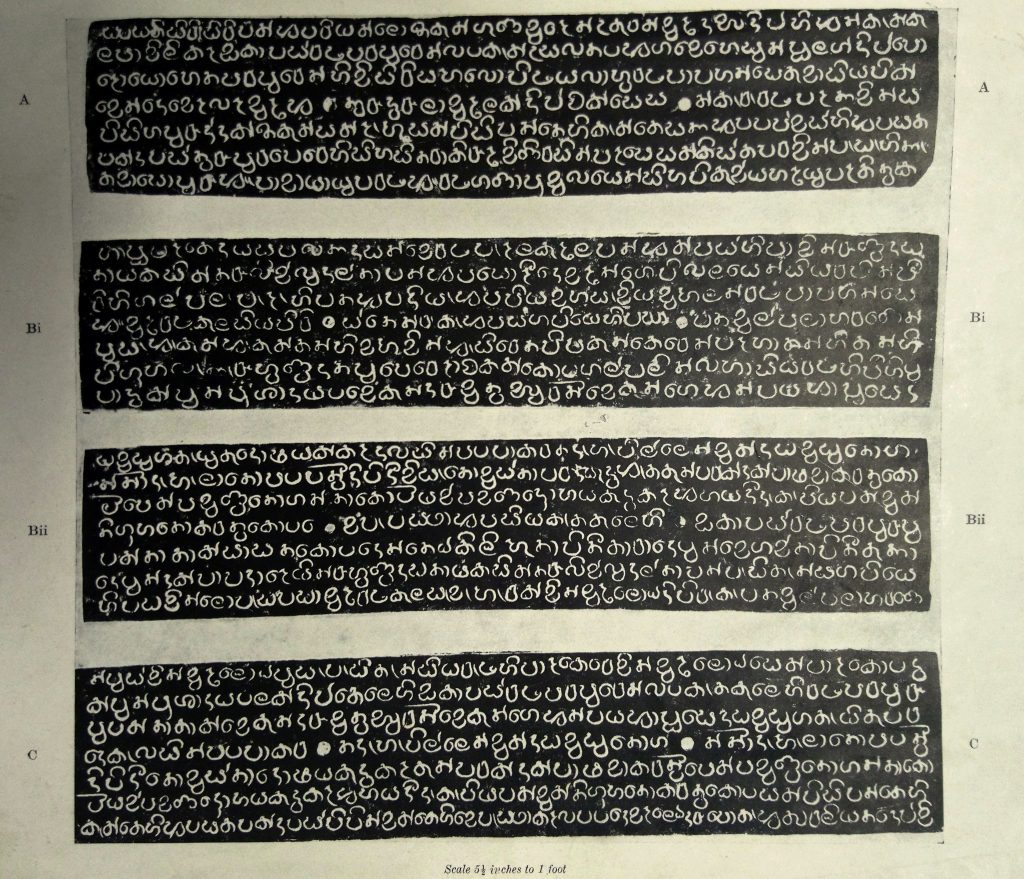
Location and discovery: – this copper plate inscription was found in 1948 in a field named Bogahadeniya in the village of Panakaduwa of the Morawak Korale of the Matara District. It was discovered by a farmer named Suravirage Carolis Appuhamy.┬áIt is currently found in the National Museum Colombo.
Description: – the charter is inscribed in three copper plates, each measuring 1 ft. 2 ┬¢ inch. in length and 3 inch. in breadth. The first and third plates are inscribed only on the inside and the second on both sides and the presence of two holes in the center suggest it would have been tied together like an Ola leaf manuscript.
Period: – 11th century A.D, Polonnaruwa period ÔÇô the record mentions as the 27th year of the reign of the King, this is calculated to 1082 A.D.
Reign: – King Vijayabahu I (1055-1110 A.D.)
Script: – 11th century Sinhalese ÔÇô it represents a stage of evolution of script from the Vessagiriya inscription of Mahinda IV to the Polonnaru Katikavata of Parakramabahu I
Language: – Sinhalese prose
Content: – the charter in brief, describes the privileges given to Lord Budal and his descendants for protecting the King during his childhood in Ruhuna from the Cholars. It states that the King during the assembly delivered the order granting privileges to Lord Budal which was brought forward by two of its members and thence, goes on to describe in the KingÔÇÖs own words how during his childhood amidst hardships, Lord Budal had protected the royal family.
Example: at the time we were remaining concealed in the mountainous wilderness, having being deprived of our own kingdom in consequence to the calamity caused by the Soli Tamils, Lord Budal of Sitnaru-bim, Constable of Ruhuna, with the aid of his routine, protected the entire royal family, including our father His Majesty King Mugalan, the Great Lord; (he) brought us up in our tender age
And orders that Lord Budal and his descendants be exempted from all forms of punishment;
Example: with regard to the sons and grandsons of this (Lord) in the manner as it has come down from his lineage even if (they) were to commit an offence for which fines of imposts should be levied, beyond a reprimand administered by word (of mouth) after having settled the offence, no fines or imposts should be leviedshould there even be an offence (committed by them) which cannot be expiated otherwise than by giving up life, (they) should be pardoned upon three times; (their) shares (of land holdings) and estates should not be confiscated
The document is finally attested by Atvaraliyana Dev, the Keeper of the register of Tamil clerks. According to Senerat Paranavitana After the royal order was delivered, its contents were embodied in formal phraseology which repeats the substance of the Kings wordsa full month seems to have elapsed between the delivery of the order and the grant of the documents embodying it.
Significance: – this is considered one of the most important inscriptions for many reasons, but primarily due to it being the only record of a ruler in Sri Lanka where is inscribed, speaking of himself ┬áin the first person. Paranavitana describes ÔÇ£the very words of the King, spoken in the royal assembly, are embodied in the grant; they are eloquent of the hardships and dangers through which VijayabahuÔǪhas to passÔǪthis is the only ancient Sinhalese document in which a king of Ceylon gives us biographical details concerning himself and, referring as it does to the tribulations of great man in his days of adversity, the record is of unique human interest.ÔÇØ
Further, the nature of the charter too is of importance, as Senerat Paranavitana says, it differs from the majority of inscriptions found in the country, which are of grants and regulations; this here is a rare instance of a royal favour received by a person for his services to the King.
This is also the oldest copper plate sannasa discovered thus far in the country, it dispels King NissankamallaÔÇÖs (1187-1196 AD) claim to have introduced the practice of issuing of grants in copper plates. Through the Panakaduwa Copper plate inscription, as per the date mentioned in the inscription as the 27th regnal year of the King, it was also possible for Prof. Paranavitana to use the interpretation of this date as an independent piece of evidence to calculate the first year of the King as 1055/6.
Note: – the three copper plates were discovered by Suravirage Carolis Appuhamy in February 1948 and after lying about his house for some time, had handed it over to the Bengamu Viharaya. During its stay here, the Ven. Vanarathana Thero of the Urapola Siri Rathanajothi Pirivena, had come to know of it and obtained it from the Bengamu Viharaya. He, knowing its significance, had informed the Archaeological Officer of Polonnaruwa Mr. Sarath Wattala who in turn had informed Prof. Senerat Paranavitana of the unique discovery and procured it for him. This finding was later legally settled and acquired by the Archaeological department after more than a year of its discovery and placed in the Anuradhapura Archaeological Museum. Suravirage Carolis Appuhamy was rewarded by Prime Minister D. S. Senanayaka on the 27th March 1950 at Kumburupitiya with a sum of Rs. 500.



It is very pleasing to know that a young person has taken such a scientific interest in our history, especially inscriptions. So, the future does not look that bad.
Thanks a lot Mr. Mahesh
Will continue to investigate
It is my personal feeling that we have not traced more than
10% of our heritage buried beneath the soil .My adorable respect to those who contribute their patriotism and sweat lost due to foreign invasions starting from south Indian rulers.
Very informative and it helped much for my assignment
This was very important for my studies
I am interested in the history and Inscriptions of a great country Sri Lanka. Thanks a lot for this article. It throws golden light upon the Inscriptions of Sri Lanka. I was planning a trip to Matara regarding the Kalidas Kumardas story. My PP was ready but Corona forced me to cancell my trip. I will be grateful to you if you could send or throw some new lights upon that episode and Matara. Thanq once again. Regards.
Great works I read and learnt much. i need to study that how taxes were collected by kings and available written epigraph and other historical records.
Not surprisingly you have omitted the Tamil inscription alogwith the Sinhala inscription at the Lankatilleke Temple. Built in 1344, by Chief Architect Ganeshvarachahari and the arches have images of Gadharva and Gajalakshmi. There is also temple for Vishnu, Saman, Vibhishana, Gnapathy and Murugan or Skandha.
Sri Lanka is still divided by language and it is because people have been made to beleive there US and THEM. But the truth is that the Tamils and Sinhalese are ONE FAMILY, divided in the 13th Century because of the decline of Buddhism in South India and People of ancient Jaffna who were then Buddhists.
However my best wishes to you to become a famous Archaeologist who can strive to find common ground for us and not always contradicting based on your language and religion which is accidental in this life. You may be born to a Tamil Parents in your next Birth.
Dear Ganesh,
I think you have been mistaken here, I have not included any inscription from the Lankatilaka Temple in this article. I believe your confusion comes from the Gadaladeniya Temple and its inscription – even I too used to get confused by these two temples those days. I compiled this article in consultation with other archaeologists on the significance of inscriptions. I can assure you that no biasness was included based on our languages. A true archaeologist is trained to bypass such natural biases. I was not able to complete the second article of this series, but for your satisfaction, I would like you to know that a Tamil inscription WAS selected – that of the Veleikkara inscription in Polonnaruwa.
I agree with you that at times, in general, people’s native language/ethnicity can have biasness, but true scientific endeavors dislodge such things. And yes as you say both the Sinhalese and Tamils are one, genetics have shown so, and its also obvious through logical reasoning. But I understand the root of your concern, that we have been made to see each other differently through our upbringing. Lets hope to change this for the future generations.
All the best and thanks for the comment.
Cheers,
Chryshane
Hi Chryshane,
Your comment was made an year ago. I am not sure whether you have since written the second part of this article.
If you have not done so, please note that the name of the inscription you mention should be Velakkaara inscription of Polannaruwa and not Veleikkara inscription in Polonnaruwa. This is important. Why? Veleikkara Ó«ÁÓ»çÓ«▓Ó»êÓ«òÓ»ìÓ«òÓ«¥Ó«░ in Tamil means servants. Whereas Velakkaara Ó«ÁÓ»çÓ«│Ó«òÓ»ìÓ«òÓ«¥Ó«░ means Palace Guard. This was an elite military formation which served the Cholas. The inscription that you mention is the only evidence anywhere that they also served in a mercenary capacity. Or perhaps they still served the Chola King, or one of his relatives. Some years later we see these Ó«ÁÓ»çÓ«│Ó«òÓ»ìÓ«òÓ«¥Ó«░ mercenaries rebelling against Vijayabahu. Their role in the Polannaruwa Kingdom is quite interesting. Therefore we should get the word right. Vellakkaara (Palace Guard), not velaikkaara (servants).
Hi, is than any Inscriptions records related to Pallavas invasion to the srilanka…?
good good good and great explanation. Thank you so much brother. Excellent.
good good good and great explanation. Thank you so much brother. Excellent.